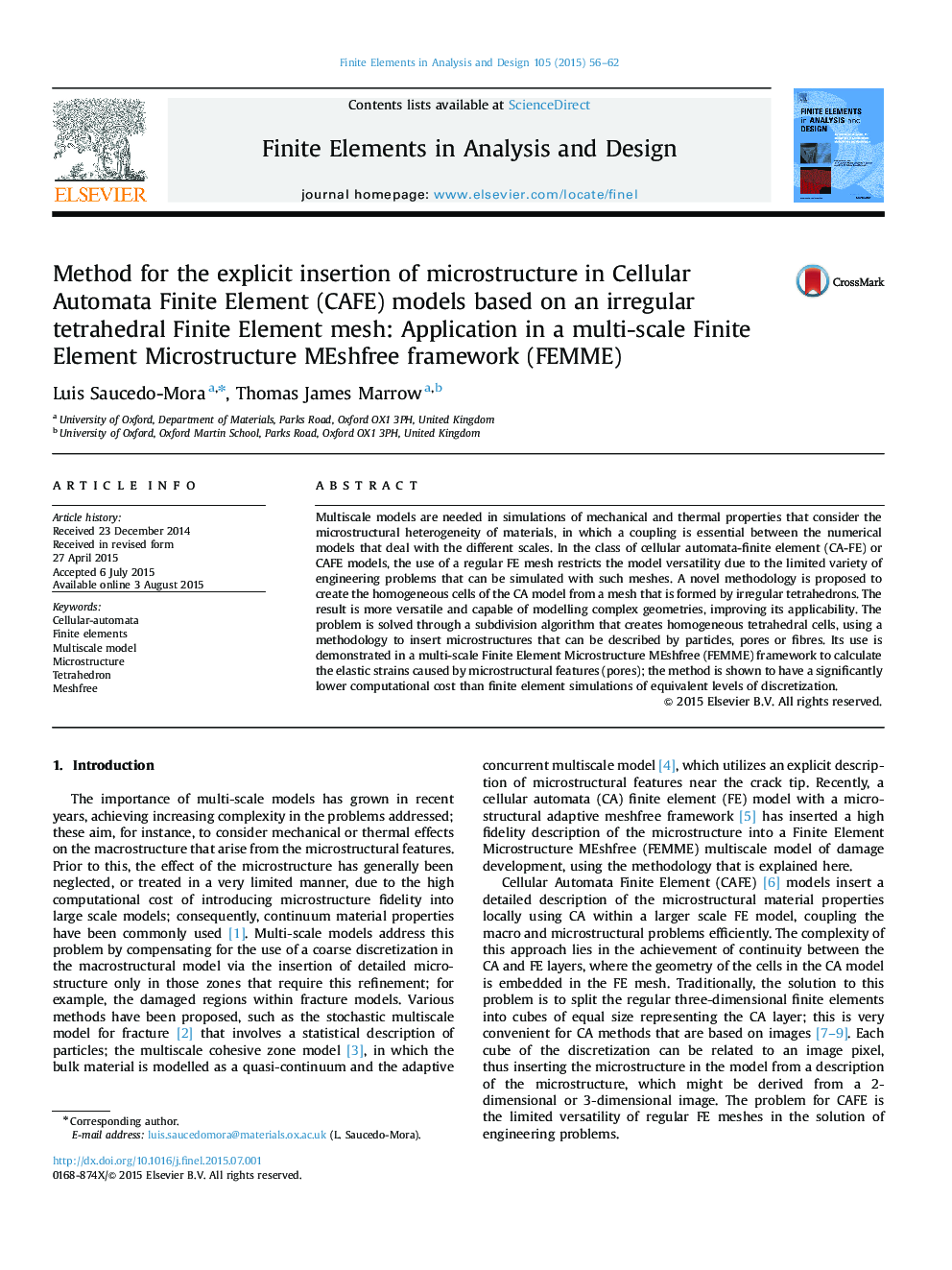| Article ID | Journal | Published Year | Pages | File Type |
|---|---|---|---|---|
| 513745 | Finite Elements in Analysis and Design | 2015 | 7 Pages |
•The novel methodology presented creates the cells for cellular automata (CA) models.•It proceeds through the subdivision of an irregular tetrahedral finite element (FE) mesh.•Complex heterogeneous microstructures can be simulated using mathematical descriptions of their features.•The method is coupled with a FEMME simulation of the strain field in a porous microstructure.
Multiscale models are needed in simulations of mechanical and thermal properties that consider the microstructural heterogeneity of materials, in which a coupling is essential between the numerical models that deal with the different scales. In the class of cellular automata-finite element (CA-FE) or CAFE models, the use of a regular FE mesh restricts the model versatility due to the limited variety of engineering problems that can be simulated with such meshes. A novel methodology is proposed to create the homogeneous cells of the CA model from a mesh that is formed by irregular tetrahedrons. The result is more versatile and capable of modelling complex geometries, improving its applicability. The problem is solved through a subdivision algorithm that creates homogeneous tetrahedral cells, using a methodology to insert microstructures that can be described by particles, pores or fibres. Its use is demonstrated in a multi-scale Finite Element Microstructure MEshfree (FEMME) framework to calculate the elastic strains caused by microstructural features (pores); the method is shown to have a significantly lower computational cost than finite element simulations of equivalent levels of discretization.
